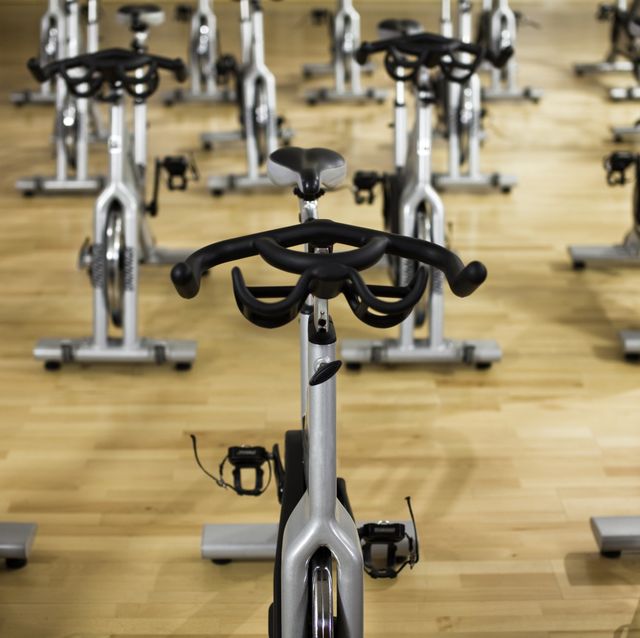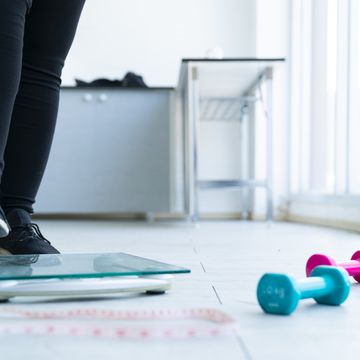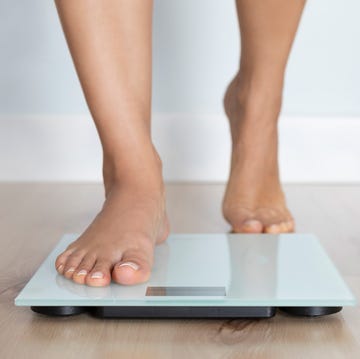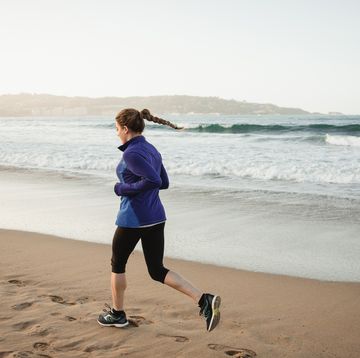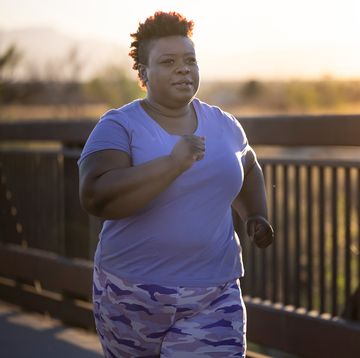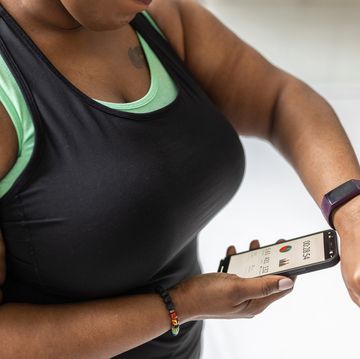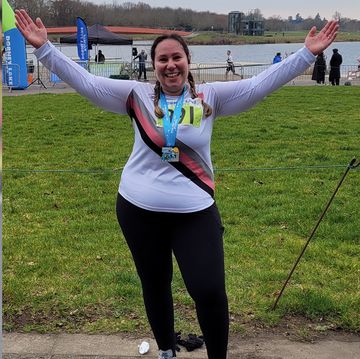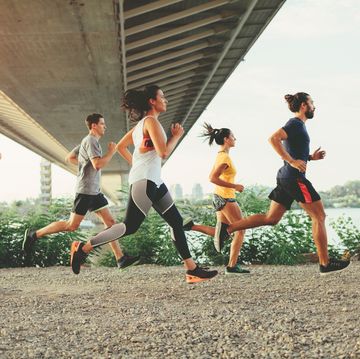Thinking of taking up cycling for weight loss purposes? Adding some cycling to your weekly training regime could help you to torch extra calories – and will help to improve your running fitness, too.
Studies have found that cross training is highly beneficial for runners in terms of overall fitness. A study published in Sports Medicine found that cross-training may be highly beneficial in terms of overall fitness and could be a useful tool during rehabilitation periods from injury and periods of overtraining.
Cross-training for runners, according to Alex Parren, personal trainer and running coach for Sundried, is any form of cardiovascular exercise that isn’t running. 'Cycling is one of the best options, alongside swimming,' she says. 'Cycling is low-impact, meaning the joints that usually take a pounding during running will be able to rest and recover while you continue to improve your aerobic base.'
What everyone's reading
As well as incorporating strength training, Parren recommends cross-training one to two times per week alongside your usual runs.
Why cycling is great for runners
Cycling shouldn’t be discounted by runners as it’s a great way to strengthen your legs and glute muscles, which will in turn improve your running form. 'One of the best ways to utilise cycling as a runner is by opting for indoor cycling,' says Parren. 'This is because indoor cycling removes the distractions and dangers of the open road and allows you to focus on a structured workout. As a runner, it’s more important to be able to focus on your fitness and strength, rather than practising bike skills . This is why an indoor cycle trainer is strongly advisable for runners.'
Because of its low impact, cycling is also an excellent way to maintain your fitness when you’re injured – it can even allow you to continue training pain-free while your injury heals. However, keep an eye on your training volume, as overdoing it could prevent your injury from healing. It’s always important to listen to your body and take complete rest if necessary.
Is cycling good for weight loss?
'No matter which diet you follow, weight loss requires you to be in a calorie deficit, which means burning more calories than you’re consuming,' says Parren. 'If you wish to lose 1lb per week, you would need to eat in a calorie deficit of 500 calories per day. This is because 1lb equals 3,500 calories, so 500 calories x 7 days equals 3,500 calories.'
Parren warns that it’s hugely important to be careful when it comes to weight loss, as restricting your food intake can lead to disordered eating, and tracking calories can become obsessive. 'It’s advisable not to be in more than a 500-calorie deficit per day, and take "diet breaks" where you eat at maintenance level every four-to-six weeks,' she says.
How much weight can I lose cycling one hour a day?
When it comes to cycling for weight loss, you can use the calories burned through this exercise to create your deficit. An hour of cycling could see you burn up to 500 calories, so if you don’t change your eating habits and cycle for an hour a day, you could burn up to 1lb per week.
Is cycling good for stomach fat?
High-intensity training, which can be performed on a bike, is particularly effective at burning abdominal fat. Since cycling is a form of aerobic exercise, it will help you to burn visceral belly fat by putting your body into a calorie deficit. 'It allows you to take your heart rate almost to its maximum level, repeatedly, which will fire up your metabolism, burn a ton of calories and improve your fitness in the process,' explains Parren.
Including a mixture of high-intensity and low-intensity exercise in your regime will bring the greatest gains in fitness and ensure adequate recovery from hard sessions. Bear this in mind when scheduling cycling workouts between your running sessions.
Cycling sessions that will help you lose weight
Ideally, the three sessions recommended below would be performed on an indoor exercise bike or turbo trainer. But they can be completed on the roads on a regular bike, if that’s all you have access to. If using a road bike, be extra aware of traffic, other cyclists and pedestrians. Try punctuating your running workouts with one or two of these each week - or more if the volume of your run training is currently low. Remember to listen to your body – take at least one rest day a week, or more if you’re feeling tired.
Session 1: Double 8
The nature of this session is designed to encourage fat-burning and increase metabolic rate for up to 24 hours after you finish the workout. It was designed by the team at Wattbike and can be found on the Wattbike Hub App.
Warm-up: 4 minutes (ramping up to 80% effort)
Interval set x 8: 1-10 seconds at 90% effort, 50 seconds at 50% effort
Recovery: 3 minutes at 50% effort
Interval set x 8: 2-10 seconds at 90% effort, 50 seconds at 50% effort
Cool down: 5 minutes at 50% effort
Session 2: HIIT Blast
This slightly longer workout lasts 37 minutes and will burn even more calories. It’s suitable for anyone at any level of fitness and is guaranteed to get you sweaty.
Warm-up: 10 minutes at 55% effort
Effort 1: 5 minutes at 85% effort
Recovery: 3 minutes at 40% effort
Effort 2: 5 minutes at 90% effort
Recovery: 3 minutes at 40% effort
Effort 3: 5 minutes at 95% effort
Cool down: 6 minutes at 30-40% effort
Session 3: 8 Round Tabata
This final session may be short but it packs a punch. It’s called 8 Round Tabata and follows the Tabata method of interval training whereby you do eight rounds of 20 seconds effort followed by 10 seconds recovery.
'Tabata is designed to fire up the metabolism and burn maximum calories in a very short time, which is ideal if you’re working out on your lunch break or before work,' says Parren.
'The idea is to give your absolute all during the efforts, so make sure to give it 100% and leave nothing in the tank. If you want a longer session, repeat the entire workout after 5-10 minutes of full recovery.'
Interval (repeat 8 times): 20 seconds at 100% effort, 10 seconds at 40%
